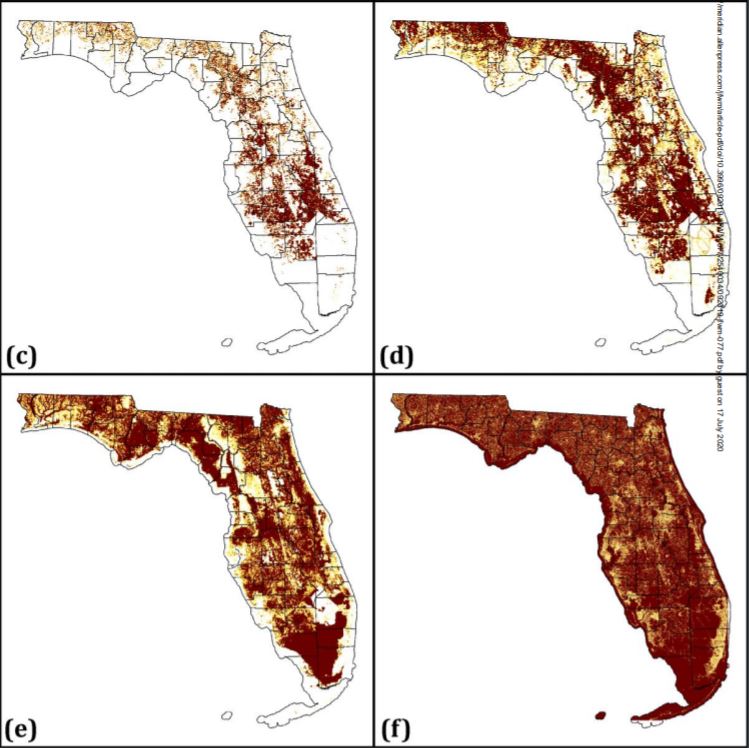
HU – Spatial analysis of potential nesting habitat for Florida sandhill cranes
Joni Downs, Courtney Buck, Faisal Qarah, Yujie Hu
Article first published online: 30 JUN 2020 Journal of Fish and Wildlife Management
ABSTRACT: The Florida sandhill crane Antigone canadensis pratensis is state-listed as threatened in Florida, where there is an urgent need to map and quantify remaining habitat. First, we used habitat suitability index (HSI) modelling to map and assess potential nesting habitat for sandhill cranes in Florida. Second, we used spatial optimization approaches to calculate the maximum number of breeding pairs that can simultaneously occupy potential nests given that they both must be of some minimum quality and must be spaced some minimal distance apart. The mapping results reveal that nesting habitat is concentrated in the central portion of the state, with adequate brooding habitat appearing to be the most limiting factor affecting habitat suitability. Assuming nesting only occurs in habitat rated as high quality (HSI {greater than or equal to} 0.7) and spacing between adjacent nests is at least 1,000 m, we conservatively estimate that 5,540 nesting pairs of Florida sandhill cranes can potentially be supported. Additional nesting pairs may be supported in habitats of marginal (HSI {greater than or equal to} 0.3; 14,530) to moderate (HSI {greater than or equal to} 0.5; 8,723) quality. The suitability maps and breeding pair estimates can be used to identify important habitat areas to focus crane conservation efforts, determine potentially limiting habitat features across the landscape, and potentially guide future population monitoring efforts. For example, grassland/prairie restoration could be used to potential increase nesting pairs in the southern portion of the state where emergent wetlands are abundant but brooding habitat is lacking.
Read the full publication at Journal of Fish and Wildlife Management